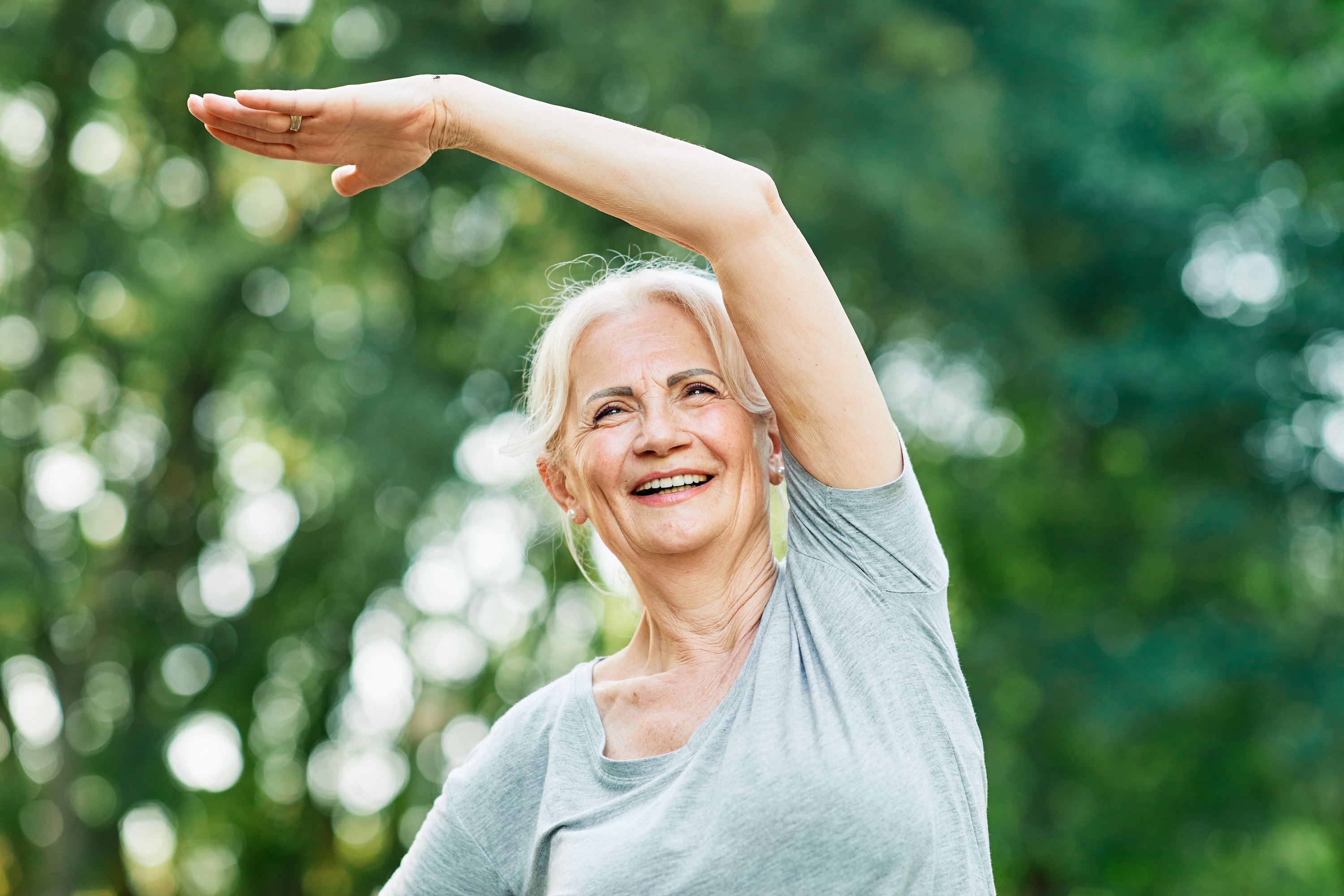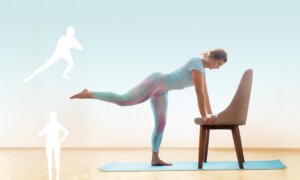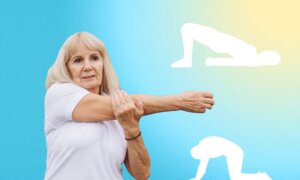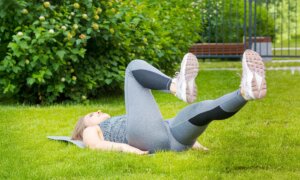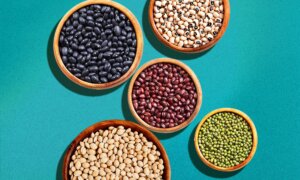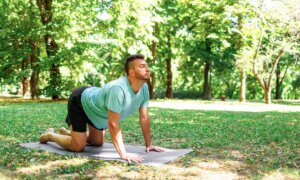Since the pandemic, fitness has become a popular trend, with many office workers heading to the gym after work. However, is sweating heavily through cardio or strength training in an air-conditioned gym at night truly the healthiest approach?
Zhu Yizhi from Mingyue Traditional Chinese Medicine Clinic in Taiwan shares insights from a traditional Chinese medicine (TCM) perspective on the best exercise methods, timing, and intensity for maintaining good health.
TCM’s Perspective on Exercise
In TCM wellness practices, strength training and excessive sweating from cardio are generally discouraged. Instead, the focus is on maintaining the flow of the body’s energy and aligning with the rhythms of nature, Zhu said. This approach primarily targets the body’s core, particularly the Guanyuan acupoint (CV-4) in TCM. Through smooth, cohesive movements, it seeks to promote the flow of qi and blood, drawing parallels to traditional practices like qigong, martial arts, and yoga.

Location of the Guanyuan acupoint. (The Epoch Times)
The ancient Chinese medical text “The Yellow Emperor’s Classic of Internal Medicine (Huangdi Neijing)” advises embracing sunlight during the day and encourages outdoor activities. This shows that TCM does not oppose exercise but rather emphasizes the method, timing, and intensity of physical activity. According to TCM, exercise should align with the body’s natural rhythms and be performed in moderation to promote overall balance and health.
Best Time and Intensity for Exercise
According to TCM theory, the body’s qi and blood flow through the 12 meridians throughout the day. By aligning with the natural rhythms of the universe, one can reduce the likelihood of falling ill. Between 7 a.m. and 9 a.m., qi and blood flow through the stomach meridian, followed by the spleen meridian from 9 a.m. to 11 a.m.
In TCM, the stomach and spleen are believed to govern the muscles. Therefore, Zhu recommends exercising after breakfast. Simple movements to stretch and strengthen the muscles during this period not only support digestive function but also promote muscle health and energy.
Qi is the energy or life force that sustains the body, and in TCM, all nutrients that nourish the body are collectively referred to as blood. The body has a “meridian” system, which includes 12 main meridians such as the stomach meridian, spleen meridian, and heart meridian. This system is responsible for transporting qi and blood throughout the body, supporting and maintaining vital life functions.
Another ideal time for exercise is between 3 p.m. and 5 p.m. A 2022 study found that exercising in the evening may be more effective at promoting muscle growth in women. From a TCM perspective, this period marks the transition between yin and yang, when the body’s qi and blood are at their peak. As a result, exercising during this time can optimize the benefits of muscle development.
In the evening, the body’s qi and blood naturally return to the organs to support rest and recovery, preparing the body for a good night’s sleep. Zhu suggests avoiding intense exercise within two hours before bedtime, as it may disrupt sleep quality.
Intense exercise is generally defined based on heart rate during physical activity, with an intensity level exceeding 60 percent of the maximum heart rate. A simple way to estimate your maximum heart rate is to subtract your age from 220. If your heart rate during exercise exceeds 60 percent of this estimated maximum, the activity is considered intense exercise. For example, for a 50-year-old individual, the estimated maximum heart rate is 170 beats per minute (220 minus 50). At 60 percent intensity, this equals 102 beats per minute. If their heart rate during exercise exceeds 102 beats per minute, it is classified as intense exercise.
Zhu recommends that those who exercise during the day aim for an intensity of 60 to 80 percent. For those who prefer exercising in the evening, the intensity should be reduced, but the frequency can be increased—for example, from three days a week to five days a week. The goal is to maintain a consistent exercise routine without disrupting the evening process of qi and blood returning to the organs. This approach promotes a light sweat and helps boost metabolism.
TCM’s View on Cardiovascular Disease
Aerobic exercise can
strengthen the heart and keep the arteries clear. Activities like jogging or brisk walking are widely regarded as essential for preventing cardiovascular disease. TCM, which emphasizes holistic treatment, does not specifically address the idea of exercise improving arterial health, Zhu noted.
However, in TCM, the term “five organs and six viscera” refers to a system that includes the heart and blood vessels. The human body is viewed as an inseparable whole, where structure (form), essence (substance), qi (energy), and spirit (mind) are deeply interconnected. Symptoms in one area may not always reflect the root cause of the problem. Therefore, whether for wellness or treatment, the body should be treated holistically, with an emphasis on comprehensive care.
TCM holds that “the heart governs the blood and vessels,” meaning the heart is responsible for circulating blood throughout the body via the vascular system. However, the concept of the “heart” in TCM differs from how it is understood in Western medicine. In TCM, the “heart” refers to the entire system associated with the “Heart Meridian,” one of the 12 meridians through which qi flows in the body.
According to TCM theory, “the spleen governs the muscles,” as muscle nourishment depends on the spleen’s ability to transform and transport the essence of food and water. Blood vessels and the spleen-stomach system are composed of smooth muscle tissue.
Additionally, “the liver governs the tendons,” meaning the liver’s essence and blood nourish the fascia, enabling the flexibility and movement of the tendons. Therefore, cardiovascular issues are closely linked to the functions of the five organs and six viscera, with the digestive system playing a particularly direct role.
After the digestive system absorbs nutrients from food, it connects to the liver through the enterohepatic circulation (a process where substances are recycled between the intestines and liver), supporting the metabolism of the three major nutrients: proteins, carbohydrates, and fats.
These nutrients are then converted into lipoproteins, which circulate through the bloodstream. High-density lipoproteins (HDL) transport cholesterol, low-density lipoproteins (LDL), and other substances deposited in blood vessels back to the liver for further processing.
When the digestive system functions efficiently, the body’s qi and blood flow smoothly, maintaining health and balance.
TCM’s Take on Strength Training
Strength training is increasingly recognized as an effective way to preserve bone density and prevent muscle loss, osteoporosis, and falls. Zhu shared insights from a TCM perspective, explaining that while strength training can help alleviate chronic pain in older adults, it is also important to assess whether their physical condition and diet need adjustment. Additionally, nourishing the internal organs may be necessary to enhance the body’s ability to absorb protein or calcium for bone health.
Although large muscles are often viewed as a sign of better health, TCM emphasizes the importance of muscle development in relation to the overall skeletal structure and body proportions. For example, for someone with a larger frame, developing bigger muscles would align with their natural proportions. However, if a person with a smaller frame builds excessively large muscles, it may not necessarily be beneficial for their overall health.
Certain types of muscle growth may lead to poor-quality muscle mass. Muscle hypertrophy relies on a process of breaking down and repairing muscle tissue, which can sometimes obstruct the flow of qi and blood. When qi and blood circulation is impaired, the muscles may appear large but lack proper function and vitality.
Another potential issue is water retention within the muscles, where dampness or phlegm-damp accumulates internally. This can cause the muscles to appear firm and bulky on the surface, but in reality, their elasticity and overall quality may be poor.
Zhu explained that dampness or fluid retention in muscle tissue can sometimes result from an imbalance between a person’s body constitution and their dietary habits. For instance, someone without a dry-heat constitution who frequently consumes cold drinks and foods may accumulate excessive dampness in their muscles. If the digestive system struggles to eliminate excess fluid, it can result in muscles that appear swollen but lack strength.
An ancient Chinese saying goes, “Stretching your tendons by an inch will extend your life by ten years.” While stretching is a gentle form of exercise, it can significantly improve both flexibility and strength. Zhu noted that when the tendons cannot be stretched properly, it may signal underlying health issues. These could include unresolved pain or illness that leads to insufficient blood flow, leaving the tendons undernourished and causing them to tighten or shorten. External factors, such as exposure to wind and cold, may also contribute to the issue. It is important to take these factors into consideration for better overall health.

